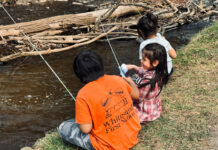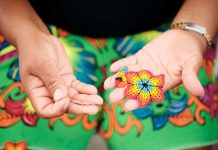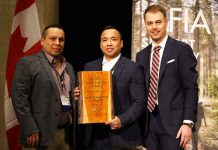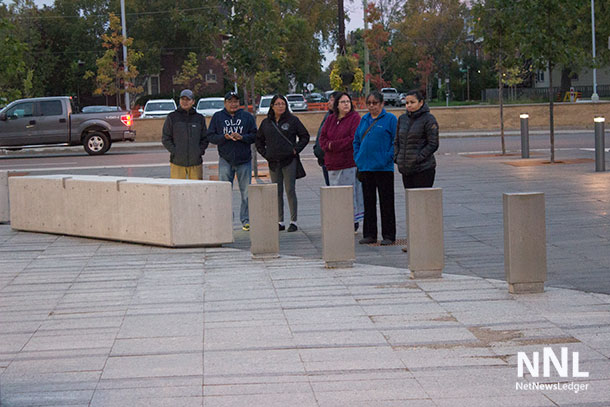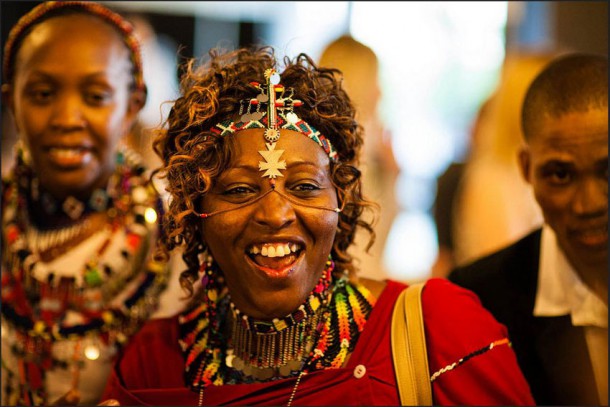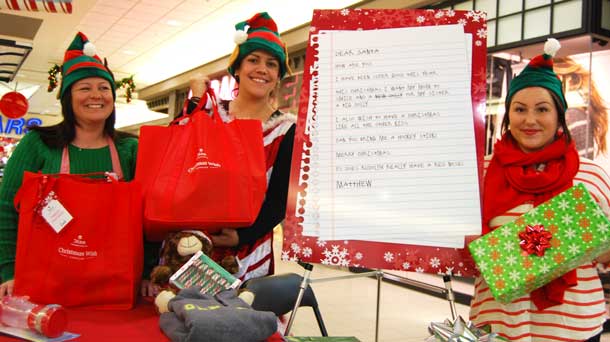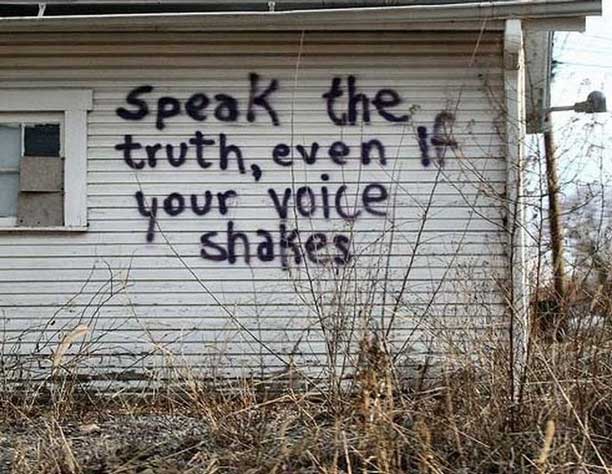
THUNDER BAY – Words have a life. And words have power. When it comes to the power of identity — who gets to decide, title and name another?
Is it another who has the authority to define us — or is it ourselves?
Is a Nation entitled to name (or to determine) the identities of those from another Nation?
Does the term “Aboriginal” truly define us as a State-created concept to which we’ve been assigned — and what is the difference?
Aboriginal: Words Can Be Covert Weapons
Lastly, how is the term “Aboriginal,” the term’s purpose, and its effect of the term situated within the Canadian State?
Beyond the Boxes and Checkmarks: A Comfortable Surrender
By birth, by descendancy, by Nationhood, and (equally as crucial) by assertion — I am Anishinaabe.
Setting aside a plastic-laminated card somewhere in the recesses of a wallet that demonstrates the audacity and entitlement of Indian Affairs (now Aboriginal Affairs) to tell me that they (and Canada) “approve” that I am a “Certified Indian”, my assigned identity is “Aboriginal.”
It’s a term that has been assigned to me by Canada, though I had no say in the matter.
I see it repeated, acknowledged, and accepted everywhere.
Businesses and Holidays. Organizations and Celebrations. School offices and University departments.
Each time I fill out one of a variety of applications, the term is there for me to scribble a checkmark.
When I assist to secure funds for a project, I am to choose the term for it to be considered a legitimate request.
“Aboriginal”
I check it. I select it.
I’ve learned to identify with it.
I’m conditioned to it.
Often, I’ve internalized it.
But lately, I question if we are empowered or disempowered by this term and this assigned title –and if it actually permeates and weakens our identity.
Not the term in itself, but by all the matters, machinery, and meaning (explicitly and implicitly) implied by the assignment of this title onto us by Canada, the uncritical acceptance of it on our part, and all that comes with such uncritical acceptance and internalization.
These thoughts and words are not meant to disregard or devalue any assertion (nor any acceptance) by even a single one of my Brothers or Sisters who align themselves with the term.
However, these thoughts you are reading are poised to serve as a pause, a step backward, a glance, a critical eye, and perhaps another vantage point of Canada’s Aboriginal project and what it may mean in the long run — regardless how inviting, comfortable, or genuinely acknowledging it may appear in the short term.
Look deeper, as it is not a neutral term.
Look behind the words as words have meaning.
I’ve heard many arguments on both sides regarding the discussion regarding the negating prefix “ab” (apart from) connected to “original” to describe original people upon Turtle Island. However, I think abandoning the discussion only at this surface, textual level is missing much of the living and breathing dynamics that impact us like falling stars through the Trojan Horse of the term Aboriginal.
And it deserves discussion.
Because words have a life.
And words have power.
Rethinking The Source
Our terms for ourselves such as Anishinaabe, Sto:Lo, and Mík’maq (among countless names of Nations of our people) are generated, determined, cultivated, shaped and maintained by the People and communities ourselves.
They are generated through ceremony, founded in worldview, anchored to territory and spirituality, teachings, languages, and are central to identity. In turn, the assertion, usage, and continuation of each Nation revitalize and resurge a firm acknowledgement of identity, ceremony, worldview, and language.
These very sources define our Nations themselves.
Based in all its dynamics, every assertion of our true Nation names are regenerative of identity.
However, the sources of the term “Aboriginal” are both Canadian courts and Canadian lawmakers, defined by colonial language and English terminology, without regard to (or acknowledgement of) the rooted importance of distinct ceremony, worldview, or our generated assertions and what they are built upon.
If internalized, does this assigned term (placed upon us) regenerate indigenous identity or does it deplete it over time — moving from substance with spirit to fragile shell?
Rethinking The Dynamics
Our terms for ourselves such as Anishinaabe, Sto:Lo, and Mík’maq (among countless names of Nations of our people) each acknowledge the distinctiveness, dynamics, variability and unique features of each our Nations and identities.
Each are different, distinctive and are all founded in (and through) our ceremonies, worldviews, teachings, spirituality, languages, and are regenerative.
The distinctive and dynamic features of each of our Nations replenish our identities as long as the Nations stand, externally and internally to each of us, and each are tied to our land, our territories, and spaces that define, sustain, maintain, and support our true identities.
In and of itself, the term Aboriginal does not acknowledge (linguistically or implicitly) the distinctiveness, dynamics, variability, or unique features of our Nations and identities.
Rather, it generalizes, homogenizes, and placed us all under a one-size-fits all “umbrella term.”
It is not tied to land, territories, and spaces that define, sustain, maintain, and support true identities generated from communities (and regenerated from acknowledgement and assertion).
In such ways, assimilative and corrosive dynamics upon distinct Nations ring true by the internalization and increased usage of the term when it outweighs all that we spoke and all that came before.
Very truly, it is the distinctive dynamics and differences, tied to Spirit, that function as central pillars and support columns to our Nations.
Rethinking Diluted Nationhood
Our terms for ourselves such as Anishinaabe, Sto:Lo, and Mík’maq (among countless of similar names of Nations of our people) each acknowledge the living Nationhood which our People have always been a part. This includes all distinctiveness, dynamics, variability, and unique features of each of our Nations and identities — again, all founded in our ceremonies, worldviews and languages.
Inherent to Nationhood is our legacy of Treaties, independence, sovereignty, distinctiveness from Canada and the Crown, government-to-government relationships, and varying histories.
However, within the homogenous mix, “Aboriginal” does not inherently acknowledge Nationhood and all that is inherent within this, including sovereignty, distinctiveness of our Nations, or independence.
What happens when this is consciously or unconsciously internalized?
Rethinking How We Are Situated
Our terms for ourselves such as Anishinaabe, Sto:Lo, and Mík’maq (among hundreds of similar names of Nations of our people) acknowledge that such Nations, identities, and communities can exist (and have previously existed) outside of being compared in a defining co-dynamic to another community, population, or Nation (such as Canada) which we have for a millennia and more.
The term “Aboriginal” inherently defines its existence while compared to Settler communities that it is juxtaposed, as opposed to independent existence. Through this co-comparison, the binary is very pronounced.
Rethinking The Outcome
The utility, acknowledgement, activation, and (just as importantly) assertions of terms for ourselves such as Anishinaabe, Sto:Lo, and Mík’maq (among countless of similar names of Nations of our people) is acknowledgement of our distinct identities (cultivated from languages, ceremony, teachings, worldview, and honouring cultural revitalization) in the short-term and sustaining our Nationhoods and identities in the long-term.
We remain strong in our identities and our Nations as they are profoundly regenerative.
However, the utility, acknowledgement, activation and internalization of Aboriginal can be depleting and corrosive to our distinct identities in the short-term and an assimilative depletion of our Nationhoods and identities in the long-term.
Through the long-term internalization of such, we may become a generalized, diluted version of who we were, but under (and defined by) a Canadian banner; “progressively” a Canadian ethnic group as opposed to sovereign, independent Nationhoods defined by true identities.
And just what policies, ushered in by Canada-past and Canada-present, does that outcome resemble?
Rethinking the Collective
One argument that may be posed is “how can we honour each identity collectively, including Metis and Inuit people without terms like Aboriginal?”
However, all of our languages have terms for the People, collectively, that honours, respects, and acknowledges our identities, circumstances, and dynamics of original peoples of our lands, as well as all Nations — without the coercive encroachment and colonial stranglehold of control posed by “Aboriginality” and all that it means politically, culturally, and legally when activated and if internalized and accepted.
Even through English, one common word is a term that has been utilized and functioned worldwide as a “Bridge Word” at the international level, with dynamics of collective acknowledgement that does not include or activate a total colonial onslaught or coercive dominion machinery (as the tides and where they carry us are the same, be it through conscious development or good intentions) such as “Aboriginal.”
Such a before-mentioned “Bridge Word” has been utilized alongside acknowledgement of traditional languages at the forefront of collective assertions of inherent rights; such as the United Nations Declaration of the Rights of Indigenous Peoples (UNDRIP).
That term, in a collective sense, is INDIGENOUS.
Anishinaabe. Sto:Lo. Mík’maq. We are distinct. We are Nations.
And our Nations stand.
But the point is; after these heartfelt thoughts and sincere words, how strongly does “Aboriginal” stand in comparison?
Do similar terms to the south such as “American Indian” and “Native American” (which linguistically entrench us not only within an imported-imposed term, but also foreign-imported political system framing) also undermine our autonomy and sovereignty?
Absolutely.
From the Spirit up; who are you?
And who are we, either explicitly or implicitly, being trained to be – even so subtly?
What is the difference and what are the costs?
Is Aboriginality the ideal avenue upon which Canada can simultaneously move towards (and accomplish) conquest and celebrate it (and justify it) through the lens of diversity?
“Our Aboriginal Canadians”
Does Aboriginality, accepted and internalized, empower … or does it disempower both in the short and long term?
I say the latter.
A Comfortable Assertion
By birth, by descendancy, by Nationhood, and (equally as crucial) by assertion – I am Anishinaabe.
And standing beside my Brothers and Sisters from other Nations – Indigenous.
At the end of the day, you may call me an idealist, call me a contrarian, or call me a stickler…
But until the tides of assimilation’s legal and mechanical undertow discussed above are shed internally, all-together, from the term, call me anything but Aboriginal.
Robert Horton

